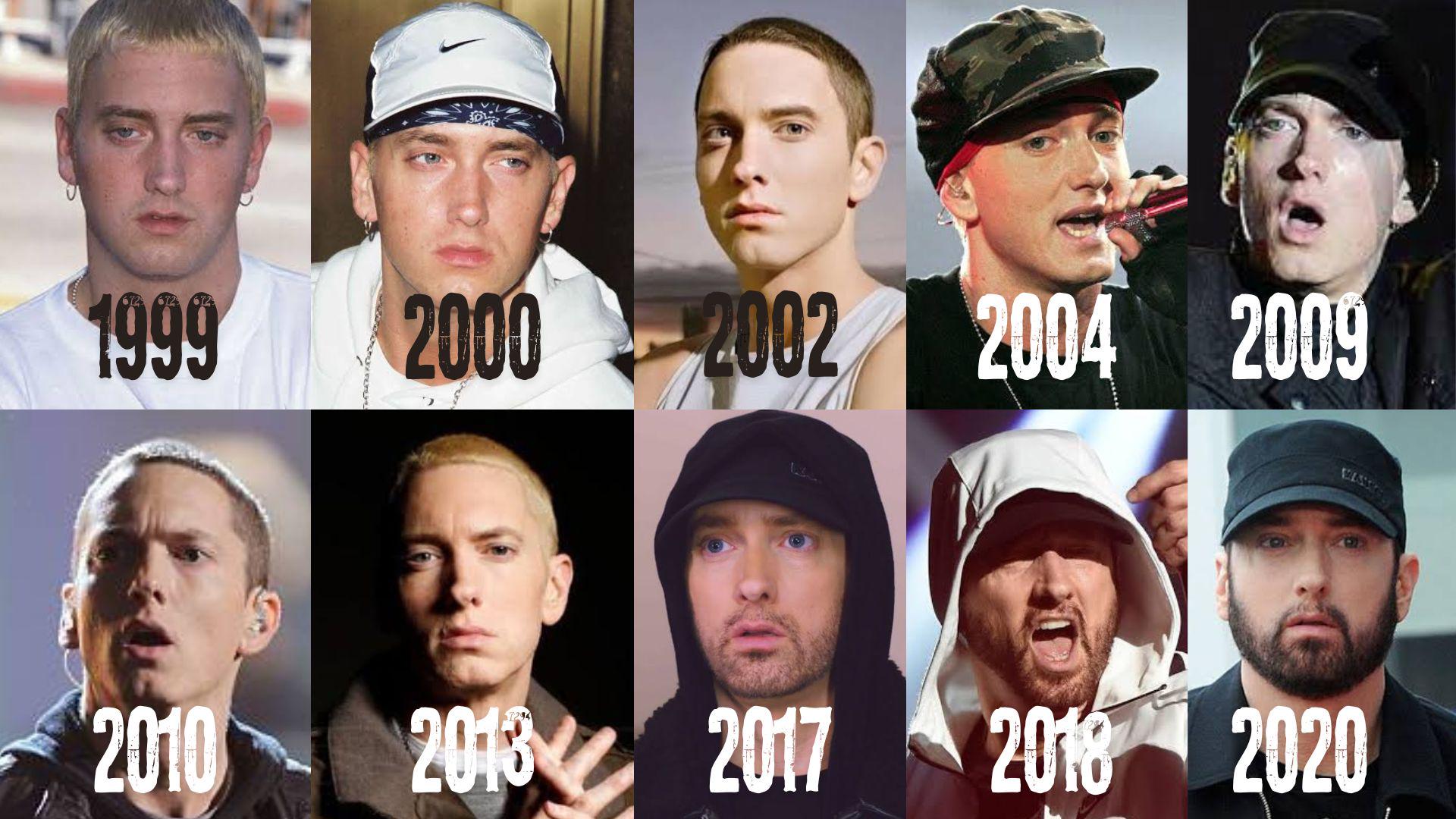When a skinny white kid from Detroit's 8 Mile started spitting rhymes in underground battle rap circles, nobody could have predicted he'd become one of the most influential artists in music history. Marshall Bruce Mathers III, better known as Eminem or his controversial alter ego Slim Shady, didn't just break barriers – he obliterated them, proving that talent transcends color, class, and circumstance.

From Trailer Parks to Platinum Records
Picture this: it's 1995, and a 23-year-old Marshall Mathers is washing dishes at a Detroit restaurant, barely scraping by while caring for his infant daughter Hailie. He's been kicked out of high school, bounced between apartments, and faced more rejection letters than most people see in a lifetime. But every night, he'd hit the underground rap battles, armed with nothing but a notebook full of rhymes and an unshakeable belief in his own ability.
The Detroit hip hop scene was brutal – and predominantly Black. As a white rapper trying to make it in a genre where authenticity was everything, Eminem faced skepticism at every turn. But here's the thing about true talent: it's undeniable. His wordplay was intricate, his flow was flawless, and his ability to freestyle left audiences speechless. He wasn't just participating in battle rap culture; he was elevating it.
The Slim Shady Persona: Genius or Controversy?
Enter Slim Shady – the darker, more controversial side of Marshall's personality. This wasn't just a marketing gimmick; it was a creative outlet for his anger, frustration, and twisted sense of humor. Slim Shady said what Marshall couldn't, pushed boundaries that needed pushing, and gave voice to the voiceless – even when that voice was saying things that made people uncomfortable.
The Slim Shady Origin: The character emerged from Eminem's need to separate his personal struggles from his artistic expression. It allowed him to explore themes of violence, addiction, and societal criticism without being directly blamed for the content.
The Dr. Dre Connection: When Legends Collide
Sometimes, all it takes is one person to believe in you. For Eminem, that person was Dr. Dre – the legendary producer who had already shaped the careers of N.W.A, Snoop Dogg, and countless others. When Dre first heard Eminem's demo, he didn't see color; he heard pure, undiluted talent.
Their mentor-mentee relationship became one of hip hop's most successful partnerships. Dre provided the beats, the credibility, and the industry connections, while Eminem brought the raw lyricism and crossover appeal that would redefine what rap music could be. Together, they created "The Slim Shady LP" – an album that didn't just launch a career; it launched a cultural phenomenon.

Breaking Down the Barriers: The White Rapper Success Story
Let's address the elephant in the room – Eminem's success as a white rapper in a predominantly Black genre sparked countless debates about privilege, authenticity, and cultural appropriation. But here's what made Eminem different: he never tried to be Black, never appropriated slang that wasn't his, and never pretended to come from a background he didn't have.
Instead, he drew from his own experiences:
- Growing up in poverty in Detroit's roughest neighborhoods
- Struggling with addiction and family dysfunction
- Fighting to provide for his daughter as a single father
- Battling depression and mental health issues
- Facing constant criticism and doubt from industry gatekeepers
His authenticity wasn't about adopting someone else's struggle – it was about being brutally honest about his own.
The 8 Mile Phenomenon: Art Imitating Life
When "8 Mile" hit theaters in 2002, it wasn't just a movie – it was Eminem's semi-autobiographical love letter to Detroit and the underground rap scene that made him. The film's climactic battle rap scenes were so authentic because they were based on real experiences from Eminem's come-up.
And then there was "Lose Yourself" – the Academy Award-winning anthem that became more than just a song. It became a motivational mantra for anyone who's ever had one shot, one opportunity, one moment to seize everything they ever wanted. The track's success proved that rap music could dominate not just the charts, but the most prestigious awards in entertainment.
Fun Fact: Eminem didn't attend the Academy Awards ceremony when "Lose Yourself" won Best Original Song. He was at home, watching cartoons with his daughter, because he never expected to win.
Lyrical Genius: Deconstructing the Rap God
What sets Eminem apart isn't just his speed – though his verse in "Rap God" clocking in at 9.6 syllables per second is certainly impressive. It's his ability to weave complex narratives, use multiple rhyme schemes simultaneously, and create entire songs that function as elaborate metaphors.
The Technical Mastery
Consider his use of internal rhymes, multisyllabic rhyming patterns, and his ability to switch flows mid-verse. He doesn't just rap about his life; he crafts it into art. His song "Stan" created an entire vocabulary – the term "stan" is now in the dictionary, defined as an obsessive fan, thanks to Eminem's storytelling genius.
His influence extends beyond technique. Modern rappers study his multisyllabic patterns, his ability to tell stories within stories, and his fearless approach to controversial topics. He proved that rap could be both technically masterful and emotionally vulnerable.
The Comeback King: Overcoming Addiction and Adversity
By 2005, Eminem's success had become his prison. Fame, fortune, and constant scrutiny led him down a dark path of prescription drug addiction. He was popping pills like candy, his weight ballooned, and his creativity suffered. The man who had conquered the world was losing the battle with his own demons.
But here's where Eminem's story becomes truly inspiring. In 2007, he nearly died from a methadone overdose. That brush with death became his wake-up call. He got clean, started running obsessively, and channeled his recovery into his music. The result was "Recovery" – an album that proved comebacks could be more powerful than original success.

The Evolution of an Artist
What makes Eminem's career remarkable isn't just his early success – it's his ability to evolve. Each album represents a different phase of his life:
- The Slim Shady LP (1999): Raw, controversial, and unapologetically offensive
- The Marshall Mathers LP (2000): More personal, dealing with fame and family
- The Eminem Show (2002): Mature reflection on success and responsibility
- Recovery (2010): Honest examination of addiction and healing
- Kamikaze (2018): Surprise release addressing critics and staying relevant
The Cultural Impact: Beyond the Music
Eminem's influence extends far beyond album sales and chart positions. He opened doors for other white artists in hip hop, but more importantly, he proved that authenticity trumps everything else. His willingness to be vulnerable, to admit his mistakes, and to use his platform for social commentary has inspired countless artists across all genres.
The term "stan" – meaning an obsessive fan – originated from his song of the same name and is now part of everyday vocabulary. His movie "8 Mile" inspired a generation of underdogs to pursue their dreams. His battles with addiction and recovery have provided hope for millions struggling with similar issues.
The Father Behind the Rapper
Perhaps the most humanizing aspect of Eminem's story is his relationship with his daughter Hailie. From his earliest tracks, he's been open about his motivation to provide a better life for her. Despite his controversial public persona, those close to him describe him as a devoted father who has always prioritized his family above his career.
Hailie, now grown up, has largely stayed out of the spotlight, but her influence on her father's music is undeniable. Songs like "Hailie's Song" and "Mockingbird" showcase a tender side of Eminem that contrasts sharply with his Slim Shady persona.
Legacy and Lessons: What We Can Learn
Eminem's story teaches us several powerful lessons about success, authenticity, and perseverance:
- Authenticity is everything: He never tried to be someone he wasn't
- Talent transcends barriers: His skill opened doors that seemed permanently closed
- Vulnerability is strength: His willingness to share his struggles made him relatable
- Redemption is possible: His recovery story inspires millions
- Evolution is essential: He continuously adapted his style and message
For aspiring artists, Eminem's journey from Detroit's underground to global superstardom proves that with enough talent, determination, and authenticity, it's possible to overcome seemingly insurmountable obstacles. His story reminds us that success isn't just about reaching the top – it's about staying true to yourself once you get there.

The Ongoing Legacy
Today, Eminem continues to release music, mentor young artists, and influence hip hop culture. His recent albums show he's still capable of creating buzz and controversy, proving that age hasn't diminished his relevance. He's become an elder statesman of hip hop while maintaining the rebellious spirit that made him famous.
Whether you love him or hate him, there's no denying Eminem's impact on music and popular culture. He didn't just change rap – he changed what it means to be an artist in the modern age. His story continues to inspire new generations of musicians, writers, and dreamers who refuse to let circumstances define their destiny.
The Bottom Line: Eminem's journey from Marshall Mathers to Slim Shady to global icon proves that sometimes the most unlikely heroes create the most lasting impact. His legacy isn't just his music – it's his proof that authenticity, talent, and perseverance can overcome any obstacle.
